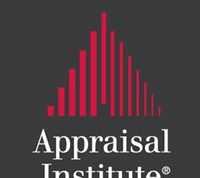WASHINGTON (October 29, 2019) – (RealEstateRama) – Pending home sales grew in September, marking two consecutive months of increases, according to the National Association of Realtors. The four major regions were split last month, as the Midwest and South recorded gains but the Northeast and West reported declines in month-over-month contract activity.
The Pending Home Sales Index (PHSI),* www.nar.realtor/pending-home-sales, a forward-looking indicator based on contract signings, rose 1.5% to 108.7 in September. Year-over-year contract signings jumped 3.9%. An index of 100 is equal to the level of contract activity in 2001.
Historically low mortgage rates played a significant role in the two straight months of gains, according to Lawrence Yun, NAR’s chief economist. “Even though home prices are rising faster than income, national buying power has increased by 6% because of better interest rates,” he said. “Furthermore, we’ve seen increased foot traffic as more buyers are evidently eager searching to become homeowners.”
Pointing to data from active listings at realtor.com®, Yun says the upper end of the market is faring well. Fort Wayne, Ind., Rochester, N.Y., Pueblo, Colo., Columbus, Ohio, and Topeka, Kan., saw the largest increase in active listings in September compared to a year ago.
Although contract signings are on the upswing, Yun says the numbers would be even greater if more housing were available. “Going forward, interest rates will surely not decline in a sizable way, so the changes in the median price will be the key to housing affordability,” he said. “But home prices are rising too fast because of insufficient inventory,” he said.
“In addition to boosting traditional home building, we should explore a greater utilization of modular factory constructed homes, converting old shopping malls or vacant office space into condominiums, permitting more accessory dwelling units, and other supply-increasing actions, in order to meet the rising demand for new housing,” Yun said.
September Pending Home Sales Regional Breakdown
Regional indices in September were mixed, with the Northeast experiencing the smallest change of the four regions. The PHSI in the Northeast fell 0.4% to 93.9 in September, but is still 1.3% higher than a year ago. In the Midwest, the index increased 3.1% to 104.4 in September, 2.7% higher than September 2018.
Pending home sales in the South increased 2.6% to an index of 127.5 in September, a 5.7% jump from last September. The index in the West declined 1.3% in September 2019 to 95.1, which is an increase of 3.4% from a year ago.
The National Association of Realtors® is America’s largest trade association, representing more than 1.3 million members involved in all aspects of the residential and commercial real estate industries.
# # #
*The Pending Home Sales Index is a leading indicator for the housing sector, based on pending sales of existing homes. A sale is listed as pending when the contract has been signed but the transaction has not closed, though the sale usually is finalized within one or two months of signing.
The index is based on a large national sample, typically representing about 20% of transactions for existing-home sales. In developing the model for the index, it was demonstrated that the level of monthly sales contract activity parallels the level of closed existing-home sales in the following two months.
An index of 100 is equal to the average level of contract activity during 2001, which was the first year to be examined. By coincidence, the volume of existing-home sales in 2001 fell within the range of 5.0 to 5.5 million, which is considered normal for the current U.S. population.
NOTE: NAR’s September Housing Minute video will be released on October 31, Existing-Home Sales for October will be reported November 21, and the next Pending Home Sales Index will be November 27; all release times are 10:00 a.m. ET.
Media Contact: Quintin Simmons 202-383-1178







